#the soundtrack. the actors. the script. the atmosphere.
Text
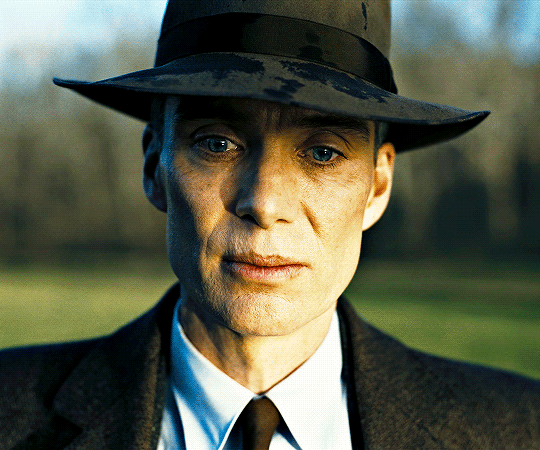





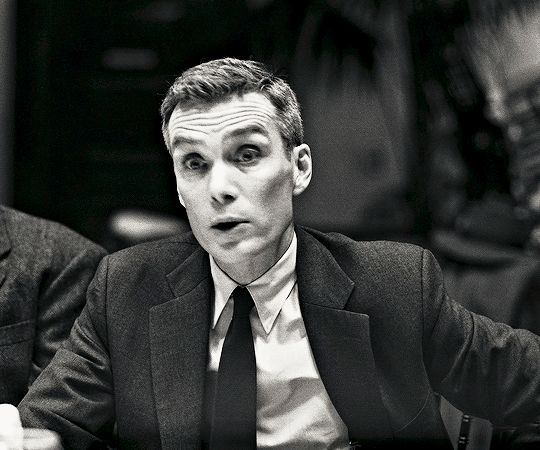
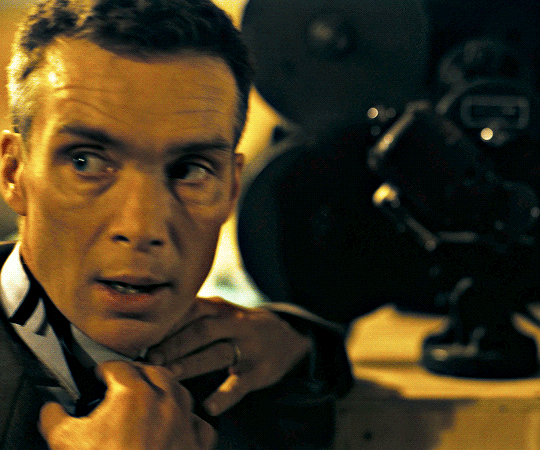


Prometheus stole fire from the gods and gave it to man. For this he was chained to a rock and tortured for eternity.
Oppenheimer (2023) dir. Christopher Nolan
#oppenheimer#filmedit#cillian murphy#oppenheimeredit#henricavyll#usersilk#useranimusvox#jokerous#dailyflicks#barbenheimer#nikolatexla#this masterpiece was way beyond me. way beyond anyone else#think of a movie that everything about it is perfect#the soundtrack. the actors. the script. the atmosphere.#i don't remember if i ever watched a scene before where my heartbeat was that fast#there were more than 100 people inside and no one made the slightest sound and it was like i could hear every heartbeat#this was my first nolan movie. i couldn't go tenet (which was amazing too) but i'm glad i didn't bc this was the best one#mind you the only thing i understood at first sight was a scene about black holes in which i was genuinely interested before#you know the movie becomes way more fun when you actually understand it - not as a whole but also the details
2K notes
·
View notes
Text
Cats and the Other Lives
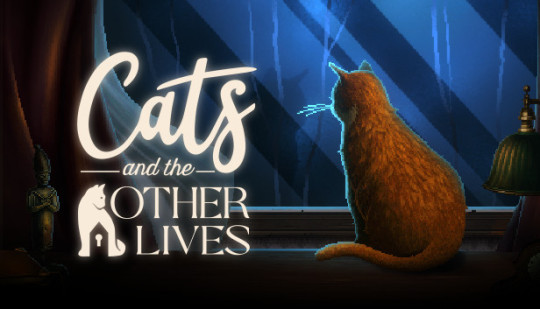
Cats and the Other Lives is a narrative point & click game that puts you in the shoes of Aspen the cat, who finds herself in the middle of tensions and secrets in a grieving family. Add to this the ghosts of the past that resurface (literally), and you'll become both witness to and actor in the events of this haunted mansion.
❤ Magnificent pixel art; with its rich scenery, splendid lighting effects and energetic animations, the game is a real eye-catcher. I'd also like to compliment the expressiveness given to the characters by their gestures, very effective and which, despite the absence of faces, gives them a real dynamic force.
❤ The attachment that is created for this dysfunctional family, even towards the most irritating characters, as their development takes place under the neutral gaze of our old cat. And, of course, we never forget our little Aspen, adorable, clever and an integral member of the family.
❤ The story juggles dramatic, intimate and even horrific scenes. I was surprised by the psychological violence of certain moments! Fortunately, Aspen's antics are also present to lighten the mood <3
❤ The atmospheric work is great, not only visually with the elements I mentioned earlier, but also with the mysterious, slightly creepy soundtrack (which uses cat meows! rather clever and amusing :p).
+/- The interaction with the scenery to create puzzles to move the story forward is really inventive imo. I also greatly appreciated the fact that there were also off-script actions, if I may say so, where our cat just enjoys herself.

On the other hand, I think the actions could have been a little more varied (in general, it's mostly jumping/sniffing/clawing).
✖ The game could have done a better job of telling us where to go at times, because without any real directions, it just keeps us turning around in this big mansion.
✖ Some of the mini-games are "die and retry", which were pretty nice I think, but the scenes are far too long, so having to retry everything could be a little frustrating and cut the narrative rhythm. Especially as mouse control was sometimes clumsy.
Cats and the Other Lives was a real surprise, charming me in just a few hours with its very feline gameplay and good sense of drama. If you enjoyed living the life of a cat in Stray, this is the game furr you....(ok I'm out =>).
youtube
➡ My Steam page
#cats and the other lives#the title of my steam review was Purranormal Cativity btw#and yes I always make stupid puns in each of my french review lol someone stop me#anyway - REALLY GOOD CAT GAME!!!!!#personal#Lola plays games#Youtube
21 notes
·
View notes
Text
Joe Alwyn interview with Deadline Hollywood
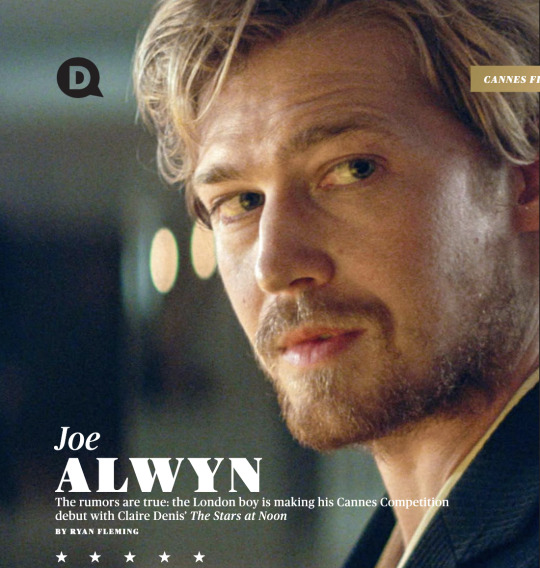
How did you get involved with The Stars at Noon?
I got involved pretty late in the game. I was sent the script on literally a Friday morning to read with an email saying Claire would like to Zoom me that afternoon. “If you’re interested, and if they want you, then you’ll be flying to Panama. Can you go tomorrow?” Claire was already there. So, I read the script and obviously I was never going to say no to working with Claire Denis. I Zoomed with her a few hours later and she said, “Will you join us?" That was on a Friday, and I think by Tuesday I was on a plane, and we started a few days later. I’d read the script, but it’s based on the book. I didn’t even get a chance to look at the book until I was there. But hopefully everything happens for a reason.
What was it like working with Claire Denis?
It was amazing. She’s unlike anyone I have ever worked with, and her sets are unlike any other set I’ve ever been on. She is a force. She is completely singular and of herself and a real orator. She can be both fierce in knowing what she wants and then incredibly tender about what she wants. It feels like she discovers everything in the moment and in such a way that... I don’t know. I think I’m probably still working out how she works. I don’t think I’ll ever work out how she works. Maybe she wouldn’t be able to answer, either. It was definitely the most unique experience I’ve had with a director on set, but I think she is completely grand.
What’s your character like?
My character is a mysterious English businessman who’s pretty enigmatic and we don’t know a whole lot about him or why’s he’s in Nicaragua. He falls into the path of Margaret (Qualley)’s character or vise versa. And they’re both sort of playing a game and sort of pretending to be someone they’re not amidst this backdrop of political unrest and turmoil and complete mistrust. But then amidst that, these two strangers, who them-selves don’t give a lot away really about what they are at heart, fall for each other and have some strange kind of connection, but then they fall into trouble. Well, he particularly falls into trouble, and they have to escape to the border, maybe together. That’s the narrative of it, but I think as much as anything, reading it, it was about those moments of tenderness between two people that managed to break through in an environment and world of mistrust and games and falsity.
So how do you prep for that kind of character?
I only had a choice to approach it a certain way because it came about quite last minute and the whole shoot was kind of up and down in the air and thrown together right at the last minute, so there wasn’t a couple of months to think about it. It really was just digesting the script as quickly as possible, getting what you can from that, thinking about bits and pieces of backstory that perhaps could lend itself to something deeper. But more than anything, just jumping in on instinct from what was on the page and going with that, and also going with Claire and seeing where she felt. Not just in terms of character story, but you’re almost informed as much by the way that she’s making the film and the feel of it.
I feel like it’s so much guided by tone and atmosphere as much as it is kind of academically doing her homework about who this character is or where they’ve come from, like with all of her films. I think this one is slightly more narrative driven than some of the others are, almost animalistic and drive by feeling as much as dialogue. Dialogue seems to sit on top of everything else in her films, almost like a kind of soundtrack. It’s more about feeling, and that’s obviously created through character and actors, but it’s also so much about everything else, the world and the tones and the colors and the camera and the music. You are just a part of that. I think a part of the images that she creates and it’s all about the images that she creates.
How was the shoot in Panama?
It was incredible. I'd never been to Panama before. everything was shot on location, so we got to see a fair bit of Panama, but also, we were really at the mercy of the weather, which was interesting. It's great being on the soundstage and it's amazing seeing the worlds that you can create in a studio, but there's something about being on location that just gives it something. whatever it is, that little spark that can be different
That can be both amazing, and it can also completely mess with the schedule because you want the sun and it's a tropical rain, or you want tropical rain and it’s sunny. We were literally at the mercy of the weather and the world around us. but there was something really special about that. It was really incredible seeing the locations that Panama had to offer in the people there were just so friendly
The crew was amazing. It was quite chaotic in some ways just because logistically there was trickiness, because you can't control the sky. But it was a beautiful place to shoot and I'm really so happy we shot there.
What are some highlights from your times on this project?
The highlight was really, first and foremost, Claire. And of course, Margaret and Panama, and everyone that we collaborated with. Eric Gautier shot it, and everyone was brilliant, but Claire was really at the helm of it. Seeing the way that she worked out how to work, and what she wanted, how she communicated with the heads of department around her, and how she functioned, was amazing. She'd be in the trunk of the car. We'd be driving around town with her. She’d be locked in the trunk, screaming out instructions in French to us who were sitting in the car — crowded with like five other people filming us — and she's just bellowing out what she wants. She's just a force like nothing else. I'm really lucky to have gone on that mad ride with her.
This is your first time back to Cannes after you won the Trophée Chopard in 2018. What does it mean to you to have The Stars at Noon by your first film to play in Competition at the festival?
It’s amazing. It’s obviously such a renowned festival and such a filmmakers festival. It's such a special place to have your film seen. So, to be a part of something that's going there in that capacity, and to be with a director like Claire, going to Cannes and obviously her being French and her being a legend in that world in cinema, it’s really, really special. it was lovely going a few years ago for the award, but also to be there with the film that you're in will be a really amazing experience, I hope.
You also have the BBC Three/Hulu series Conversations With Friends coming out where you play Nick Conway. What did you make of him?
He's someone who's in a point of recovery when you meet him and has come through a bit of a storm. He's a married man who is slightly numb to the world, and just functioning. He embarks on his affair with a woman who's about 10 years younger than him. It's about the relationships between him and his wife and also this girl called Frances. He's also quite aloof actually, but he's someone coming back to life a bit.
Conway is also an actor, so what similarities did find between his acting career and in your own?
I don't know if I thought about specifics of what his career might have been or what he would have done comparatively to mine, but certainly he's a character who has had ups and downs, and he's also struggling with mental health, and that's been formed probably by many things, including his job. I think I can relate to the strangeness of the job and the ups and downs of it and how it can be the best thing and also something tough to navigate. So although I don't know the specifics of how our careers might be different, I felt like I could really relate to him on the level of understanding how strange it is to dress up and pretend to be someone for a living and all the weirdness that comes with just trying to do it as a job
Were you familiar with this book before you started?
I read it when it came out. I really like Sally Rooney's books. I'd also read Normal People when it came out, before it was made into a show. So, both books I was a big fan of. Then I saw what they had done with Normal People and was also a big fan of Lenny Abrahamson who made normal people, so the chance to be a part of his world in his mind and Sally Rooney's world in her mind combined was really exciting.
What was it like working with Lenny Abrahamson?
It was amazing. I think he's truly brilliant. he's an incredible director. he's very detailed in the way he works, interrogating the material, almost beat by beat and looking to mine each moment for what might be there in a very subtle way. but he's never overbearing and doing so and he's also very collaborative. I like his very naturalistic, very subtle, very intimate worlds that he creates, obviously most recently with Normal People but in plenty of his other work as well.
it feels very grounded and very real, and very much about what's not said as much as what is said. and also, just as a person, he's the nicest man in the world. Hilarious and just a great friend.
[source]
#joe alwyn#interview#the stars at noon#claire denis#conversations with friends#thank you to the people who sent this in!! 💖
114 notes
·
View notes
Text
Irish Wish Review: A Fantasy Filled with Love and Laughter
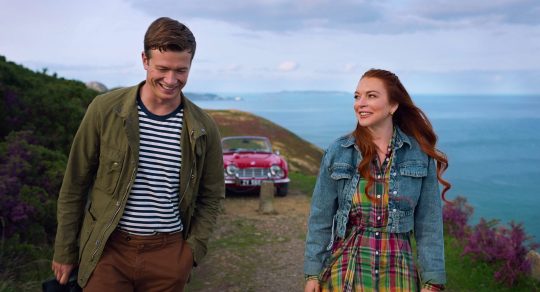
Irish Wish, the latest offering from director Janeen Damian, beckons us into a realm where the fantastical meets the all-too-familiar whirlwind of romantic emotions. Starring Lindsay Lohan, who has seemingly found a cozy niche with Netflix following their prior collaboration, this fantasy romantic comedy unfolds against the lush backdrop of Ireland, promising a mix of magic, mirth, and misadventures. With a script penned by Kirsten Hansen, the film aims to strike a delicate balance between the whimsical and the profound, wrapped in the comforting blanket of love stories we have come to cherish.
https://www.youtube.com/watch?v=_gKXowSyfjM
Lohan, returning to the genre that has cherished her, embodies Madeline "Maddie" Kelly with a palpable sense of authenticity and vulnerability. When Maddie's heart gets shattered by the news of her lifelong love marrying her best friend, she opts for grace, diving into the bridesmaid role with a heavy heart in Ireland, the land of legends and leprechauns. The plot takes a mystical turn when Maddie, caught in a moment of desperation, voices a wish for true love, only to find herself in an alternate reality as the bride.
Ed Speleers as James Thomas and Alexander Vlahos as Paul Kennedy navigate their roles with commendable charm. Each actor presents a different love archetype that Maddie finds herself entangled with. The chemistry is palpable and occasionally sizzles, although at times it feels as though the narrative does not fully explore these dynamics to their fullest potential. Ayesha Curry, Elizabeth Tan, and the ever-elegant Jane Seymour add depth to the ensemble, bringing humor, wisdom, and a touch of sassiness that enriches the narrative fabric of Irish Wish.
The film's captivating Irish setting showcases sprawling landscapes and quaint villages. It's a character in its own right, offering a visual feast that elevates the film's fairy-tale quality. The locale also integrates seamlessly with the film’s thematic elements. It underscores the idea that love, much like the Irish countryside, is wild, unpredictable, and breathtakingly beautiful.
However, Irish Wish doesn't escape certain pitfalls common to the genre. The plot, for all its magical twists, occasionally treads into the realm of predictability. The contrived central conflict weakens the narrative's potential for greatness. The movie lightly explores themes of self-discovery and fate, leaving a desire for a deeper exploration.
The movie's heart and humor, however, are undeniable. Lohan shines in her role, captivating audiences with her warmth and wit. Her nuanced performance showcases her ability to anchor a film with charisma and talent. The supporting cast also delivers, providing a balanced mix of levity and gravitas that propels the story forward.
From a technical standpoint, Irish Wish benefits from Janeen Damian's direction. It maintains a brisk pace and a light touch, ensuring that the film's fantastical elements feel grounded in emotional truth. The soundtrack serves as an effective emotional and atmospheric complement to the on-screen action.
The film excels at depicting the complexity of love within a wish-fulfillment fantasy, without avoiding real emotions. It celebrates the idea that finding true love involves both magical and painful moments.
Irish Wish is a comforting, enjoyable addition to the romantic comedy genre. It offers escapism without straying too far from emotional authenticity. Its charm lies in its familiar tropes, heartfelt performances, and the scenic beauty of Ireland. The film is a reminder that sometimes, a little dose of magic and laughter is just what we need. Lindsay Lohan and the cast bring to life a tale as inviting as an Irish pub on a cold day. It might not offer any surprises, but its warmth and cheer are more than enough to warrant a visit.
Read the full article
0 notes
Text
Stills are an important part of television, despite being unglamorous and often overlooked compared to more celebratory elements like soundtracks, actors, and scripts. Here are a few of the reasons why stills – defined as still frames, pictures, or photographs – have such an essential role in television production.
First and foremost, stills are valuable for establishing a mood, setting, or tone. While other elements may express characters and plot, it is stills that provide immersive context and an understanding of the characters’ environment. They are especially important for period pieces and for science fiction series, where something as small as a background image can tell viewers more than dialogue.
Stills can also be used to clarify plot points too nuanced for dialogue. On dramas, the close-up of a letter, or a newspaper headline, is often used to supplement dialogue and inform viewers which characters are involved in a story. And wildlife or nature shows, stills can be used to express the size or danger of an animal, and they can clarify what the animal is doing that the audience may not be able to see on camera.
Finally, stills are essential for giving a clear sense of the narrative and cutting between scenes. Stills can be used to provide a visual timeline of events, so that viewers know when each scene takes place. They are also important for providing continuity between scenes, and puzzle pieces, to indicate how the TV series is progressing.
Overall, stills are often the unsung heroes of television production. Despite being overlooked, they are essential in providing the atmosphere and context that help to send the message of each and every episodic show.
0 notes
Text
Jake Seal Black Hangar Explains The Difference Between Film Production vs. Post-Production
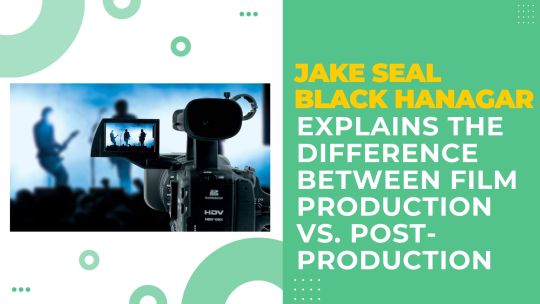
In the world of filmmaking, two crucial phases play distinct but equally important roles in bringing a movie to life: production and post-production. These phases are often misunderstood or conflated by those outside the industry. To shed light on the differences between film production and post-production, we turn to Jake Seal Black Hangar a seasoned filmmaker with years of experience in both realms.
Film Production
Film production is the phase where the movie is shot. It's the core of filmmaking, where the creative vision of the director and the collaborative efforts of the entire crew come together. This is when the story is captured on camera."
Key Aspects of Film Production
Pre-production: Before a single frame is shot, a considerable amount of planning takes place. This includes script development, casting, location scouting, set design, and creating a shooting schedule. Jake Seal Black Hangar Studios emphasizes that meticulous pre-production is vital for a smooth production phase.
Principal Photography: This is the heart of production, where actors perform their scenes, and the director and cinematographer capture the visuals. It involves long hours, careful coordination, and sometimes unexpected challenges.
Crew: A film crew during production consists of a wide range of specialists, from the director and cinematographer to the gaffer and grips. Each member plays a unique role in bringing the director's vision to life.
On-Set Decisions: In the production phase, decisions are made on the spot. These can relate to blocking, camera angles, lighting adjustments, and even dialogue changes if necessary.
Raw Footage: During production, what's captured on camera is referred to as raw footage or rushes. This material is then passed on to the post-production team.
Post-Production
Post-production is where the movie truly takes shape. It's often referred to as the 'invisible art' because it involves all the work done after the cameras stop rolling."
Key Aspects of Post-Production
Editing: One of the most critical phases in post-production is editing. This involves selecting the best takes, arranging scenes, and fine-tuning the pacing and rhythm of the film. Editors work closely with the director to shape the final narrative.
Sound Design and Mixing: Sound plays a crucial role in the emotional impact of a film. Sound designers create and manipulate audio elements, while sound mixers ensure that dialogue, music, and effects are balanced perfectly.
Visual Effects (VFX): Post-production is where visual effects are added to enhance or create elements that couldn't be captured during filming. This can range from subtle enhancements to full-blown CGI.
Color Correction: Color grading is essential for establishing the mood and atmosphere of a film. Colorists adjust the color and tone of each shot to achieve the desired look.
Music Composition: Film scores and soundtracks are composed and recorded during post-production. Music enhances the emotional impact of scenes and contributes significantly to the overall feel of the movie.
Final Cut: After all the individual elements are refined, they are combined into the final cut of the film. This includes the synchronization of audio and visuals, ensuring that the film flows seamlessly.
Quality Control: Post-production also involves quality control checks to ensure the film meets industry standards and is ready for distribution.
The Collaborative Process
Both production and post-production are highly collaborative processes. According to Jake Seal Black Hangar Studios In production, you have actors, directors, cinematographers, and a vast crew working together to capture the story. In post-production, the editor, sound designer, colorist, and other specialists collaborate to refine and polish the raw material into a finished product."
The distinction between these phases may seem clear-cut, but it's important to note that they often overlap. During production, decisions made on set can influence post-production, and vice versa. Effective communication and teamwork between these phases are crucial to creating a cohesive film.
The Time Factor
While production may take weeks or even months, post-production is where the real-time investment happens. Editing, sound design, visual effects, and other post-production tasks can take several months to complete, depending on the complexity of the project."
The duration of post-production also depends on factors such as the availability of post-production resources, budget constraints, and the desired level of polish for the final product.
Challenges in Both Phases
Each phase of filmmaking comes with its unique set of challenges. In production, weather, actor availability, and unexpected technical issues can disrupt schedules. In post-production, the challenge is often the pressure to deliver a polished product within a set deadline."
Additionally, Jake Seal Black Hangar points out that post-production can be a financially demanding phase due to the costs associated with editing, visual effects, and sound design. Meeting these challenges requires a dedicated and skilled team.
Conclusion
In the world of filmmaking, production, and post-production are two distinct but interconnected phases, each with its unique challenges and creative opportunities. Film production is where the story is captured on camera, while post-production is where the magic of editing, sound design, and visual effects transform raw footage into a finished masterpiece.
Jake Seal Black Hangar's insights remind us that both phases are essential for creating a successful film. It's the seamless collaboration between production and post-production teams that allows us to enjoy the magic of cinema on the big screen. So, the next time you watch a movie, take a moment to appreciate the dedication and craftsmanship that goes into both bringing it to life and refining it behind the scenes.
#entertainment#studios#film#filmindustry#jakesealblackhangarstudios#blackhangarstudios#production#jakesealblackhangar#movies#camera#jake seal black hangar studios#jake seal black hangar
0 notes
Text
Exploring the Art and Craft of Filmmaking: A Beginner Friendly Guide

Filmmaking is a captivating and multifaceted art form that has the power to transport audiences to different worlds, evoke emotions, and tell compelling stories. It's a collaborative endeavor that combines creativity, technical expertise, and a deep understanding of storytelling. In this in-depth guide, we'll dive into the world of filmmaking, exploring its various aspects, from pre-production to post-production, and everything in between.
Pre-Production: The Foundation of Filmmaking
Before a single frame is shot, a filmmaker goes through an extensive pre-production phase. This stage is crucial for planning every aspect of the film, ensuring that the vision is clear and achievable.
Scriptwriting
The journey of filmmaking begins with a script. Whether it's an original screenplay or an adaptation, the script serves as the blueprint for the entire film. It outlines the dialogue, actions, and structure of the story.
Storyboarding
To visualize the scenes and shots, filmmakers create storyboards. These are detailed drawings or digital representations that map out each shot, helping the director and cinematographer plan the visual storytelling.
Casting
Casting involves selecting the right actors to bring the characters to life. The casting process is meticulous, as it's essential to find actors who can embody the roles and connect with the audience.
Location Scouting
The choice of locations can significantly impact the mood and atmosphere of the film. Location scouts search for suitable settings that align with the director's vision.
Budgeting and Scheduling
A detailed budget and shooting schedule are crucial for managing resources effectively. Producers and production managers work together to allocate funds and time to different aspects of the production.
About Production
The production phase is when the actual filming takes place. It involves a complex interplay of creativity and technical expertise.
Cinematography
Cinematographers, or directors of photography (DOPs), are responsible for capturing the visual essence of the film. They decide on camera angles, lighting, and camera movements to create the desired look and feel.
Directing
The director is the captain of the ship, responsible for guiding the actors and crew to bring the script to life. Their vision and direction shape the overall tone and style of the film.
Sound
Sound recording and design are vital for filmmaking. Sound engineers and designers ensure that dialogue is clear, and the soundtrack enhances the emotional impact of the scenes.
Production Design
Production designers create the film's visual world, including sets, props, and costumes. Their work adds depth and authenticity to the storytelling.
Post-Production: Crafting the Final Product
Once the filming is complete, the raw footage goes through a meticulous post-production process.
Editing
Film editors assemble the footage into a cohesive narrative. They make creative choices regarding pacing, timing, and the sequence of shots to enhance the story's impact.
Visual Effects (VFX)
In modern filmmaking, VFX artists use computer-generated imagery (CGI) to create breathtaking visuals and special effects, pushing the boundaries of what's possible on screen.
Sound Editing and Mixing
Sound editors and mixers refine the audio, adding layers of ambient sound, music, and effects to create an immersive auditory experience.
Color Grading
Color grading enhances the visual aesthetics of the film, ensuring consistency and mood throughout. It can dramatically alter the look and feel of a movie.
Music
Composers and music supervisors select or compose the soundtrack, using music to reinforce emotions, build tension, or create atmosphere.
Distribution and Beyond
Once the film is complete, the next steps involve marketing, distribution, and potentially entering film festivals or seeking theatrical release.
Marketing and Promotion
Marketing teams create trailers, posters, and promotional materials to generate buzz and attract audiences.
Distribution
Distribution involves deciding how and where the film will be screened. This can include theaters, streaming platforms, or DVDs.
Film Festivals and Awards
Many filmmakers aim to showcase their work at prestigious film festivals to gain recognition and secure distribution deals. Winning awards can also boost a film's reputation.
Crafting a Unique Filmmaking Style
One of the most intriguing aspects of filmmaking is the opportunity for directors and filmmakers to develop their distinctive styles and voices. A filmmaker's style encompasses their visual, narrative, and thematic choices that set them apart from others. Here are a few elements that contribute to crafting a unique filmmaking style:
Visual Aesthetics
Visual aesthetics are a hallmark of a filmmaker's style. Consider the works of directors like Wes Anderson, known for his symmetrical compositions and vibrant color palettes, or Christopher Nolan, celebrated for his use of practical effects and mind-bending visuals. These choices create a signature look that distinguishes their films.
Thematic Consistency
Exploring consistent themes across multiple films can become a filmmaker's trademark. For instance, the Coen Brothers often delve into themes of fate and moral ambiguity in their works, creating a distinctive thematic thread throughout their filmography.
Collaborations
Collaborations with recurring creative partners can also shape a filmmaker's style. Directors like Martin Scorsese and Robert De Niro, or Tim Burton and Johnny Depp, have forged successful partnerships that contribute to their unique cinematic visions.
The Role of Technology in Filmmaking
Filmmaking has evolved significantly with advancements in technology. From the use of digital cameras to innovative post-production techniques, technology plays a pivotal role in shaping the industry. Here are some notable technological trends and tools:
Digital Filmmaking
The shift from film to digital has democratized filmmaking, making it more accessible to aspiring filmmakers. Digital cameras offer greater flexibility, cost-effectiveness, and the ability to shoot in challenging conditions.
CGI and Animation
Computer-generated imagery (CGI) and animation have expanded the possibilities of storytelling. They allow filmmakers to create breathtaking worlds and characters that were once limited by practical effects.
Virtual Reality (VR) and Augmented Reality (AR)
VR and AR are pushing the boundaries of immersive storytelling. Filmmakers can transport audiences into the heart of the narrative, blurring the lines between traditional cinema and interactive experiences.
Post-Production Tools
Editing software like Adobe Premiere Pro and DaVinci Resolve, as well as sound design tools like Pro Tools, have revolutionized the post-production process, offering more control and creativity to filmmakers.
Conclusion
Filmmaking is a dynamic and ever-changing art form that combines creativity, technology, and storytelling prowess. Whether you're a seasoned filmmaker or just starting on your journey, understanding the intricacies and possibilities within the realm of filmmaking is essential. It's a world where imagination and innovation have no bounds, and every filmmaker has the opportunity to leave their mark on cinematic history.
Filmmaking is an art form where acting plays a crucial role, in crafting unforgettable cinematic experiences. For those who aspire to be actors or filmmakers enrolling in Acting classes or Acting school can truly be an experience.
As you embark on your own filmmaking adventure, remember that the heart of any great film lies in the storytelling. Be bold in your vision, explore your unique style, and embrace the challenges that come your way. In the end, it's the passion and dedication of filmmakers that continue to captivate audiences and keep the magic of cinema alive.
Whether you're capturing a small, intimate moment or creating an epic spectacle, filmmaking is a journey that allows you to share your stories, emotions, and perspectives with the world. So, grab your camera, assemble your team, and let your creativity flow, because the world is waiting to be inspired by your cinematic masterpiece.
Also, In the world of modeling, where aesthetics and image are paramount, there's a common misconception that pursuing a traditional College for modeling education may not align with a career in the fashion and modeling industry. However, choosing to focus on college while pursuing modeling can offer a range of benefits that not only enhance your modeling career but also provide a strong foundation for your future.
0 notes
Text

Currently Watching...
Next to Normal // Macbeth
Donmar Warehouse // Shakespeare's Globe
September has been a great month for theatre! I saw Next to Normal at the Donmar (twice!), Macbeth at the Globe and Moulin Rouge at the Piccadilly Theatre.
Honestly, nothing compares to Shakespeare at the Globe - I've never seen a production elsewhere that lives up to it. This is the first time I've ever seen Macbeth, and it wasn't one of the ones I studied at school, so pretty much all my knowledge of Macbeth came from reading If We Were Villains! I knew the basic plot, of course, but that was about it.
The Globe does modernisations really well, and there were so many great little details, like the witches' cauldron being a blender. As always, the production was incredible, and the acting was amazing. I try not to read plays until I've seen them performed, but now I've seen such a good production, I'm looking forward to reading Macbeth.
My least favourite of the shows I saw this month was Moulin Rouge. I liked the film, and they offer special experience packages at the theatre, so we thought it would be a fun evening. The show was really fun, and the package included a semi-private lounge with a cheeseboard and a bottle of champagne, which was so worth doing - it made the night really special. But the show was super touristy, both in content and atmosphere, so I probably wouldn't go again.
But the absolute best show of the month was Next to Normal. I've been hoping this show would one day get a West End production for so long - and it's taken fifteen years, but it finally happened! And the Donmar is my favourite theatre, I'll pretty much see anything there, I've never seen a bad show at the Donmar! So I bought tickets literally the moment they went on sale, and I'm glad I did, because they sold out very quickly.
I was thrilled when the cast was announced. Dan was played by Jamie Parker, and I've been a fan of his for so long, I book tickets for literally anything he's in, he's such a good actor. And Jack Wolfe was Gabe! I absolutely lost it when he was announced, I would die for him in a heartbeat. I'd only seen him in Shadow and Bone, so I was a bit worried - Gabe is a really intense role to sing - I wasn't sure if he'd do it justice. But oh my god, he's got the most incredible voice!
I hadn't seen the two female leads before, Caissie Levy (Diana) and Eleanor Worthington-Cox (Natalie), so I didn't have any expectations either way, but they were both fantastic, they had much better voices than the actors on the Broadway recording, and they gave such convincing performances. I did cry both times seeing it, and I really wish I could see it another dozen times. I would kill for a soundtrack recording and/or an NTL recording!!
I bought the script when I was there last, and I'm definitely going to read it before the end of the year!
#currently watching#theatre#west end theatre#next to normal#donmar warehouse#macbeth#shakespeare#shakespeare's globe#moulin rouge
0 notes
Text
Spirit Box Radio is Crowdfunding for Season Two!!
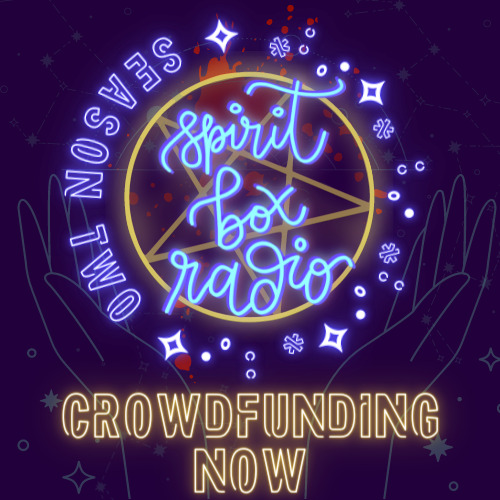
Atmospheric and engaging, Spirit Box Radio is an audio drama which will lull you into a false sense of security before pulling the rug from under your feet. If you loved the creeping sense of unease of The Magnus Archives, the weird whimsy of Welcome to Night Vale and the LGBTQ+ representation of Hello from the Hallowoods, you'll love Spirit Box Radio.
Now launching it's second season, Spirit Box Radio has been shortlisted for a People's Choice Podcast award for Season One. The full cast and original creator are back, and determined to make Season Two even better.
Donate £20 (or equivalent in your currency)
Check out the crowdfunder page
More info under the cut, plus at the bottom a more detailed Image ID than the ALT description has space for!!

Spirit Box Radio is an indie horror audio drama which follows Sam Enfield, the unlikely host of Spirit Box Radio, a show for witches, arcanists, and the magically-inclined. Sam took over the show after the mysterious disappearance of his mother, the Illustrious Madame Marie, a renowned psychic. With no penchant for the Arcane Arts, Sam struggles to find his feet, and as he does, he discovers that Spirit Box Radio may be haunted by something much worse than ghosts: secrets.
Season One followed the mystery of Madame Marie's disappearance and uncovered Sam Enfield's true place in the conspiracy surrounding it. In Season Two, Sam, his sisters - sardonic Kitty and cynical Anna - and his snarky immortal boyfriend will try to unearth the mystery of the Man Who Walks Here and There (AKA The Man in the Flat Cap and Shell Suit, or The King of the Blood Rose Crown) whose many titles are found under almost every stone they turn. It's a story steeped in mystery, horror, trauma and grief, with plenty of softness on the side.
The show is made primarily by its creator, Pippin Eira Major, who wrote, directed and edited every episode in Season One.

Spirit Box Radio wouldn't be possible without the incredible cast of the show. Now 15 Voice Actors strong, the cast of Spirit Box Radio brings to life an array of characters, including; a shady but eloquent florist who cant be trusted; an Ominous Phone Guy; a trio of Inconvenient and malevolent entities; and numerous others.
Just like the characters in the show, our cast is mostly LGBTQ+ and many of us are young and trying to break into the industry. Here's who we are:
Pippin Eira Major (he/they) as Samael Apollo ‘Sam’ Enfield
Jessie Jeffrey (she/her) as Ekaterina Erzabet ‘Kitty the Investigator’ Enfield
Alex Peilober-Richardson (she/her) as Anastasia Morgana ‘Anna’ Enfield
Will Cummings (he/him) as Oliver ‘the Florist’ Boleyn
Billy Bray (he/they) as Scourge
Beca Barton (she/they) as Indi
Tais Grimberg (she/her) as Bliss
Kay Watson (he/she/they) as Ingra
Ellie Ripley (she/they) as ‘the Bog Witch’ Rhytidia Delphus and Stykler Snr.
Daisy Major (she/they) as Regular Caller Beth
Elinor Wood (they/them) as Additional Voice
Gary Major (he/him) as Additional Voice
Mars J Brown (she/them) as Stykler Jnr.
Rose Eke (she/her) as the Mystery Caller
Freya Meldrum (she/her) as Show-Caller Emily
If this crowdfunder is successful, we're also hoping to add five more fantastic VAs to our cast!

Being such a tiny studio, Hanging Sloths can't afford to compensate our cast for their amazing work and provided the amazing performaces you hear in Season One on a voluntary basis. They've all agreed to come back for Season Two on a Profit Share model, where they'll all get a percentage of the money made on this crowdfunder. Here's a handy graphic breaking that down:

Our main priority is to make sure the cast are making something for their hard work on the show. Up to our main goal amount, we'll be splitting the money like this:
- 50% towards the actors' profit share (which exludes me, Pippin)
- 25% towards guest writers and directors
- 25% towards other essential costs including hosting the show on Acast.
Our initial goal amount (£2500) has been worked out to make sure everyone (besides Pippin) who is providing acting, directing or writing for the show can be paid an industry standard amount.
If we don't make our full goal, whatever we DO make will be divided up according to the percentages you see above!
Anything made above that will go towards compensating Pippin for his work on the show, too.
A brief personal statement from Pippin on why the payment is being structured this way:
'As creator of the show, it's my main concern that everyone else who provides Voice Acting talent, writing, and directing is priotised for the amazing work they do. If we're able to raise enough that I can start to compensate myself, too, that would be amazing, but the main focus is on raising enough funds for everyone else.'

Please ensure you add your email to your pledge so we can contact you about your rewards!
Any amount - a huge thank you from the entire cast and crew of Spirit Box Radio Season Two! You're helping make indie audio drama happen.
£5.00 - your name in the credits of one of the first episodes of Spirit Box Radio Season Two
£10.00 - Name a Faithful Listener! Choose your name or any you can think of to be a writer or forum user in the show.
£20.00 - Advanced Edition of the Spirit Box Radio Season Two Official Soundtrack!
£40.00 - All the rewards above, PLUS a copy of the Spirit Box Season One Soundtrack
£50.00 - All the rewards above, PLUS annotated scripts for episode one (on day of episode release)
£100.00 - All the rewards, PLUS a personalised letter from Pippin, creator of the show.
£200.00 - All of the rewards, PLUS a private chat with Pippin (limited to 3) (no you don't have to chat with me directly if you don't wanna!)
£500.00 - All of the rewards, PLUS a producer credit on the show

£3000 - 'HOW NOT TO HOLD A SEANCE' BONUS MINI-SODE
This short, extra episode will be fully sound-scaped and completely finished, and will be set in the gap between Season One and Season Two.
£3500 - 'THE LIFE AND DEATHS OF OLIVER BOLEYN': A DIGITAL COLLECTION OF SHORT STORIES
A digital collection of short stories penned by show creator Pippin Eira Major, telling tales from the as-yet mysterious past of the immortal florist, Oliver Boleyn. Amongst these tales will be stories from his time at the palace of Versailles, a chance meeting with a renowned poet which may or may not have led to the creation of a certain book about a particular cursed painting, and a perilous voyage at sea.
£4000 - 'RHYTIDIA HOSTS THE SHOW' BONUS MINI-SODE NO.2.
In this bonus Mini-Sode where Rhytidia Delphus (voiced by the spectacular Ripley) will host an episode of the Enlightenment Segment (or so she thinks).
£4500 - MUSICAL MINI-SODE
A short, bonus musical episode of Spirit Box Radio, with original songs written by Maybe Wednesday and performed by members of the cast of the show.
Donate £20 (or equivalent in your currency)
Check out the crowdfunder page
[IMAGE ID: a square image of the words 'Spirit box radio' glowing in blue, like a neon sign. it's on top of a glowing yellow pentagram, trapped inside a more brightly glowing yelllow circle. behind these, a red splatter of blood. Around the circle, glowing in pale purple, a variety of stars and sparkles around 'Season Two'. Under this image, glowing yellow, it reads 'Crowdfunding now'. The background is deep purple, broken by teal grey constellations and a pair of hands, cradling the neon words from behind. END IMAGE ID]
[BANNER IMAGES: Puple backgrounds with pale consetellations and yellow neon caps-locked words as described in the Alt Text]
#spirit box radio#spirit box radio podcast#audio drama#crowdfunding#sbr#sbrp#lgbtqiia+#lgbtq creator#trans creator#nonbinary creator
36 notes
·
View notes
Text
Lovely Writer Epsiode 8 - analysis
I have to say, this week's episode is the best one so far because so many things got explained and the puzzlepieces suddenly find their places. It's incredible how much hidden forshadowing the other episodes contain. Every week, I sit here and find clues they placed in episode 3 or something. It's really nice and that's what good writing is about. I find the script really great because this show focuses on so many different aspects, it's literally overwhelming.
On the one hand, we have Nubsib and Gene's lovestory which mostly happens apart from all the other stuff going on. Lovely Writer makes fun of all these cheesy romances with cringey dialogue underlined with a soundtrack that doesn't fit the atmosphere in the scenes at all. Gene and Nubsib have scenes which mix all the cliches at the same time. But at the same time, their lovestory is slow and their affection for each other is not all about physical attraction because love is not about that. Of course, enjoying kissing and having sex is a normal part of a relationship but I often feel like BLs want to tell me all the other stuff happens "off screen" because the talks late at night and taking care of each other are actually way harder to write. But Lovely Writer shows us very much about all those other aspects of a relationship, for example when Gene and Nubsib talk on the phone for hours. These are relationship goals which are rarely addressed but take place way more often than making out.
On the other hand, Lovely Writer is not about a lovestory at all. They make the Thai BL industry look bad by showing the harmony on camera and during interviwes is a fassade because all this pressure and fame gets to one personally and you turn out to be the worst version of yourself. This industry basically wants the actors to sacrifice their life, their identity for entertainment. This is a very sharp critic and Lovely Writer portrays this very well. They manage to switch between lovestory and toxic film business quite well.
Lovestory in a fairytale
Last episode nubsib went to the house where Gene hid and this story continues in this episode. We all know, what happened last week, there were many gifs about it and the cuteness continues here on an even higher level.
But all this takes place somewhere far from their work with no other people around. They are in this house together and spend two day there of explorig their feelings and I guess, talking about stuff most of the time. The rooms are always flooded with daylight and it looks very cozy and warm. Their relationship went next level and they both are very happy about it, so the first half of this episode contains a lot of positive feelings and the outside is not interfering. It looks more like a lovestory in a fairytale because they are drunk on happiness and excitement. It's something new, the start of a relationship and that's a big step. In the beginning they don't face challenges and can basically live happily in this house. But of course, the fairytale has to end and they go back. The mood switches at an instant and the lighting is different because now they aren't as free any more. Before, they were in a lonely house and were free to do anything.
This sort of bright lighting returns on the balcony because there, they can't be disturbed either and are just two young people in love again. Being in love in a silly and cheesy way is also part of a relationship and it's something normal, so Gene and Nubsib have those moments too even after they are back because now we (and Gene) know it's real. It's not something that happened in a different world. It is the reality and takes place even in the normal life.
Relationship goals
Like I said, their relationship looks very natural and is not faked or forced. In fact, their romance is too good to take. They share a few kisses but it's not the kisses which make my heart melt. It's Nubsib ask for consent in those moments. It's their talks. It's the little actions for me because little actions of care and love are way cuter than just a bunch of kiss and NC scenes. That's not what I want. I only watch BLs because they are about a love despite what society might tell you is right. I'm not here for kiss scenes. In some shows, all the private scenes of the main couple contain either kissing or sex and I don't understand why. In a relationship, you like this part as well but like the person you do that with more.
So, I like Gene and Nubsib's relationship being more lovingly and honest very much because trust, loyalty and honesty are more important.
Also, we can see they are both very serious about the relationship and go all in for it. There is no angrily storming off again. There is no being mad for a whole epsiode any more. There is no annoying shyness and blushing. Both characters don't really match the cliche dynamic and I love that because stereotypes just make me sick.
Here, Gene and Nubsib have an argument and even though they get disturbed, Nubsib makes sure they will talk about it later. They will have a mature and conversation about this when they both have calmed down. And this is real. This is normal and nothing to be very scared of. It's just a little argument that will probably be solve in a few sentences.
Lovely Writer has a whole concept. We got a moment when one of them was storming off and was mad for a whole episode but they just did that to reverse it and portray it as unrealistic and unfair for the other person because this way Gene wasn't giving Nubsib any chance to apologize nor explain himself.
Oversexualization
If I'm gonna talk about the fact the love story doesn't contain a lot of kiss or NC scenes, then I need to talk about this problem here. Actually, the oversexualization of BLs is harshly criticized in this scene and I belive Gene is totally right but the thing is, it's not just the Thai BL industry and it's not just BLs. It's far more than that and I believe westernization is a part of it (that's a huge topic, I know. I will only address one tiny aspect here). I don't know very much about the eastern countries of Asia. I only know what I've seen in documentaries or on the internet, so I can't say I'm an expert at all. But from what I know and what I've seen, Eastasian societies are more closeted about relationships and sex. I'm not saying every country (please, don't be offended and feel free to correct me) and I don't know how open Thailand is about this topic but I feel like the "western" countries are more open about it. I live in Germany and here it's a topic like everything else and people tend to overshare. I feel like the countries which are that open, oversexualize very quickly because it's no difficult topic among the people. So, oversexualization happens in all film businesses of such countries and since Thai BLs have fans all over the world, they oversexualize too in order to make the people like it. The whole internet seems horny all the time, so it works and sells itself pretty good. So, Gene doesn't just call out the Thai BL industry. He basically calls out half of the world's film businesses because they all do it.
But like Hin said, that doesn't mean NC scenes should be banned or are bad. Just an overuse of such passages is the problem here because then it's not about romance any more. Then, you can call it an erotic novel. When there's one or two NC scenes and they make sense in the story, it's totally fine. The writers and authors just need to find the right balance. And since the preview looked like things will be happening, then it's just happening because the mood was right. See sex as part of bonding because relationships are basically just good friendships with some next level stuff.
Consent
People love Nubsib asking Gene for consent whenever he wants to kiss him and that's really considerate but I saw this post here and discovered Nubsib is not the king of consent at all. He's only asking for consent whenever they are alone. But not when they are with other people because he knows Gene is shy. He outs him to three people during this episode even though he said he'll wait and Gene obviously doesn't want him to do that. Afterwards, he even comforts Gene to lift the pressure but he can't deny he put this pressure on Gene in the first place. As I said, Gene is shy towards other people, Nubsib knows that and plays this card. With others, Gene won't say anything because he's too polite and also, you don't have an argument in front of others. So, Nubsib doesn't stay true to his words and is still manipulative.
Finding your soulmate
Believe it or not, but I totally see Lovely Writer fulfilling the "soulmate" trope because this episode both indicated this - more or less through words.
Nubsib tells Gene, he felt lonely all these years in America and this loneliness vanished when he saw Gene again. He had a relationship before but still felt lonely (also, I love his previous relationship doesn't matter at all. There's no jealousy or anything). This sounds like he wants to say Gene is his long awaited soulmate.
Gene was lonely as well over all these years and got used to it but as soon as he and Nubsib grow closer he's reminded of the loneliness. He doesn't accept it any more and I believe he's nearly dying inside right before he calls Nubsib. They spend two days alone and many things happen emotionallywise, so when he gets home, he feels very lonely. Nubsib reminded him what it's like to not be lonely. He became aware of the loneliness again and hates it even more now he has someone freeing him from that feeling. Even though Gene doesn't say it, I feel like they want to tell me Nubsib is his soulmate too.
Product placement
This show's product placement cracks me up everytime. The picture with this woman... what was that lmao
Why would she hold up a face mask for a picture?
Also, the spray is so misplaced... Gene was upset but Nubsib was like "at least smell good"
Nubsib: the king of comforting
19 notes
·
View notes
Text
Never Gonna Snow Again by Michał Englert & Małgorzata Szumowska
It is a dreamlike, precise and profound cinematographic work that develops indirectly, because the references are conceptual and not image-based, referring the spectator to the disturbing atmosphere that Andrei Tarkovsky presented us within Stalker in 1979. The film is interesting and disturbing, satirical and curious, a cross-section of bourgeois insularity in modern Poland.
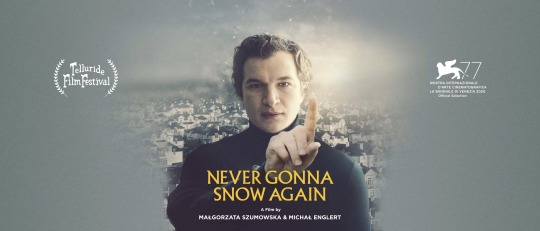
The main character is Zhenia, a young Ukrainian masseur who moves to Poland for work. Zhenia finds work in some cottages in an exclusive residence. He starts visiting, with his portable massage table, these inhabitants, almost all of whom are privileged and frustrated people prone to melancholic fantasies. The mysterious protagonist's activity is to bring hours of relief to these characters who seem to live a fake life in muffled days.

Zhenia not only gives relaxing massages, but he also knows the art of hypnosis, which makes him particularly fascinating and mysterious. He takes care of his clients and observes them deep inside, listening to them and giving them intimacy and friendship, if not pure love. But we know Zhenia is also looking for something in all this. Probably out of a conspiracy of silence, no one in the village ever asks him anything about his personal life, since he comes from a place near Chernobyl. Only the viewer, thanks to flashbacks, knows that as a child Zhenia lost his mother to nuclear fallout, and he mistook radioactive soot for snow.

The script, which comes across as comical, is extremely well-paced, explores the behaviour of the most self-centred middle-class characters and how they treat each other, their children and their employees.
Also, on the film shooting and the photographic level, we face the achievement of impeccable artistic perfection.
The elegance of the soundtrack, including Shostakovich's waltz, which was also used by S. Kubrick in Eyes Wide Shut, relaxes us and immerses us in this profound and thoughtful work, which suggests many references to other important films and is rich in sociopolitical allusions.
Directors and screenpaly: Michał Englert e Małgorzata Szumowska
Actors: Alec Utgoff
Countries: Polonia Germania
Year: 2020
Runningtime: 113 min.
Ita -->
Never Gonna Snow Again by Michał Englert & Małgorzata Szumowska
A Venezia 77.
Si tratta di un opera filmica onirica, precisa e profonda che si sviluppa rimandando indirettamente, perché i riferimenti sono concettuali e non d’immagine, lo spettatore a quella atmosfera inquietante che ci presentava già Andrei Tarkovsky in Stalker nel 1979. Il film è avvincente e inquietante, satirico e curioso è uno spaccato sull insularità borghese nella Polonia moderna. Il protagonista di questa vicenda è Zhenia un giovane massaggiatore ucraino che per motivi di lavoro si trasferisce in Polonia.
Zhenia trova lavoro presso alcune villette inserite in un residence esclusivo. Comincia a fare visita, con il suo lettino per massaggi portatile, a questi abitanti, quasi tutte persone privilegiate e frustrate inclini a fantasie malinconiche. L’attività del misterioso protagonista è quella di portare delle ore di sollievo a questi personaggi che sembrano vivere una vita finta in giornate ovattate.
Zhenia non solo fa massaggi rilassanti, conosce l’arte dell’ ipnosi e questo lo rende particolarmente affascinante e misterioso. Si prende cura dei propri clienti e li osserva nel profondo ascoltandoli e dandogli intimità e amicizia se non puro amore. Ma sappiamo che anche Zhenia sta cercando qualcosa in tutto ciò. Probabilmente per omertà nessuno del villaggio gli chiede mai nulla della sua vita personale dal momento che proviene da un luogo non lontano da Chernobyl. Solo lo spettatore, grazie a dei flash back sa che da bambino Zhenia perse la madre a causa della ricaduta nucleare e lui scambiò la fuliggine radioattiva per neve.
La sceneggiatura, che a volte si rivela comica è estremamente ben curata, esplora il comportamento dei personaggi più egocentrici della classe media e di come si trattano l’un l’altro, i loro figli e i propri dipendenti.
Anche a livello filmico e fotografico ci troviamo di fronte a una realizzazione d'impeccabile perfezione artistica. L’eleganza data dalla colonna sonora, tra cui troviamo il valzer di Shostakovich usato anche da S.Kubrick in Eyes Wide Shut ci rilassa e ci fa immergere in questa opera profonda e riflessiva che ci suggerisce molti riferimenti ad altre opere filmiche importanti, nonché ricco di allusioni sociopolitiche.
Regia e sceneggiatura: Michał Englert e Małgorzata Szumowska
Attori: Alec Utgoff
Paesi: Polonia Germania
Anno 2020
Durata: 113 min.
#nevergonnasnowagain#michał englert#małgorzata szumowska#alec utgoff#venezia77#chernobyl#cinemathography#poetry#mostradelcinema#biennalecinema#film#movie#films#filmfestival
8 notes
·
View notes
Text
Blu-ray Review: Forgotten Gialli: Volume 3

Vinegar Syndrome launched its first Forgotten Gialli Blu-ray box set less than a year ago, but the powerhouse distributor is already on the third volume of obscure giallo (European murder-mystery) films. The latest installment features 1972's Murder Mansion (also known as The Mansion in the Fog), 1975's Autopsy (also known as The Victim), and 1977's Crazy Desires of a Murderer (also known as The Morbid Vices of a Housekeeper).
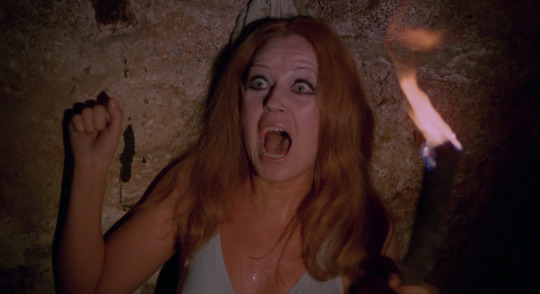
Murder Mansion is a Spanish-Italian co-production that only classifies as a giallo by a rather liberal definition. It starts out slow; the first line of dialogue isn't spoken until six minutes in, after the opening title sequence and a lengthy driving scene. When the night is consumed by fog, a group of strangers from different backgrounds seek refuge in an old mansion next to an abandoned village where local legends say vampires once resided. It's not long before they suspect that ghosts have risen from the nearby graveyard.
Written by Luis G. de Blain and Antonio Troiso (Beyond the Door), the murder-mystery aspects are more Agatha Christie - or even Scooby-Doo, given the cartoonish reveal - than giallo, lacking many of the subgenre's hallmarks; but even more so director Francisco Lara Polop seems to be drawing influence from gothic horror in both approach and execution. The chilling atmosphere is palpable as soon as the fog rolls in, but the first body doesn't pop up until nearly an hour into the 86-minute film. The last act makes admirable attempts to compensate with scares and shocks.
Murder Mansion has been newly restored in 4K from its 35mm original camera negative. It includes the original Spanish language audio with newly translated English subtitles as well as the English and Italian dubs. The disc includes a 20-minute interview with actress Evelyn Stewart (The Psychic). While she admittedly doesn't remember the specifics about much of the production, she recalls working with the special effects and explains her use of a stage name. She’s noticeably pleased by the film, particularly Polop's direction.
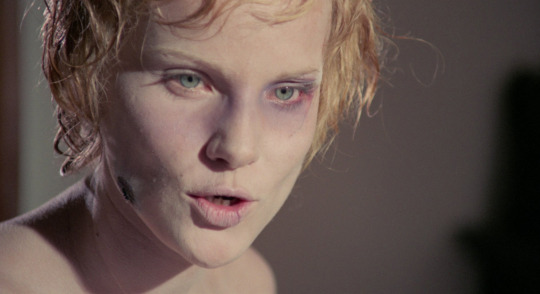
The most well-known title among the three Forgotten Gialli sets, Autopsy opens with a montage of grisly suicides plaguing Rome, purported to be caused by sun spots. A young, female pathologist (Mimsy Farmer, Four Flies on Grey Velvet), serendipitously writing a thesis on the differences between simulated and authentic suicides, teams up with an epileptic race car driver-turned-priest (Barry Primus, Boxcar Bertha) following the alleged suicide of his sister to investigate.
Directed by Armando Crispino (The Dead Are Alive), who co-wrote the script with Lucio Battistrada, the Italian giallo is convoluted even by the subgenre's standards. It's also shockingly sleazy, from a misogynistic coroner to maddening visions of being molested by cadavers. The film is uneven in both tone and pacing and bloated at 100 minutes, but it ends on a high note with a memorable finale. On the whole, it's more unnerving than most gialli, due to the taboo buttons it pushes as well as the hints of surrealism in which Crispino indulges. A score by Ennio Morricone (The Thing, The Good the Bad and the Ugly) certainly doesn't hurt.
Autopsy has been newly restored in 2K from its 35mm original camera negative. It includes both the English and Italian (with newly translated English subtitles) mono soundtracks. It offers a variety of special features: a featurette on Crispino consisting of 38 minutes of insight from the late director's son, Francesco Crispino; a 10-minute interview with Francesco Crispino, who dissects various versions of the film and discusses his father's influences; an 11-minute interview with editor Daniele Alabiso conducted by Francesco Crispino, in which they examine the film's peculiar rhythm; an introduction by the director from a screening; alternate Italian titles and credits; and the theatrical trailer.

If only Crazy Desires of a Murderer's plot was as stimulating as its traditionally verbose giallo title. It centers around an affluent, globe-trotting countess, Ileana (Isabelle Marchall, Black Emanuelle). She returns to her familial castle with new friends she met while traveling in China, who unwittingly used her as a drug courier. Meanwhile, her traumatized half-brother is kept locked away in the basement. But those are the least of her problems once someone starts murdering the inhabitants of the castle.
Aesthetically, this one most closely resembles a traditional giallo. What the drab castle lacks in color palette, director Filippo Walter Ratti and cinematographer Gino Santini (Django the Bastard) make up for with interesting camerawork. There's also ample gore, as the killer's modus operandi involves removing the victims' eyes, and heavy doses of sleaze, although it pales in comparison to Autopsy. But writer Ambrogio Molteni (Black Emanuelle) employs an Agatha Christie-esque sleuth (Corrado Gaipa, The Godfather) to solve the mystery, and the abundance of clunky procedural scenes weigh down the film.
Crazy Desires of a Murderer has been newly restored in 4K from its 35mm original camera negative with Italian mono audio and newly translated English subtitles. The disc includes a 15-minute interview (in Italian with subtitles) with actor Giuseppe Colombo (who more notably went on to produce The Stendhal Syndrome and other Dario Argento productions). He candidly recalls frequent disagreements with Ratti and other drama that befell the production.
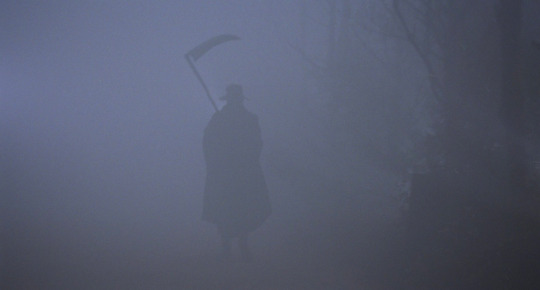
While the films are hit or miss, the experience of unearthing them is always a thrill. Even the packaging is great, with each film in its own individual Blu-ray case with reversible artwork, all of which are housed inside a sturdy box (limited to 6,000). Between Forgotten Gialli and the forthcoming Home Grown Horrors, I hope Vinegar Syndrome never stops spoiling us with box sets of hidden gems.
Forgotten Gialli: Volume 3 is available now on Blu-ray via Vinegar Syndrome.
#vinegar syndrome#giallo#autopsy#murder mansion#crazy desires of a murderer#forgotten gialli#italian horror#italian film#dvd#gift#review#article#horror#ennio morricone#mimsy farmer#evelyn stewart
19 notes
·
View notes
Text
you can’t stop | a.i

notes: so this was an idea that came up when i first started screaming to @spicycal about broadway!ash and then i spiralled because i started listening to the hairspray soundtrack and said the magical words ‘my head has got ashton playing link in hairspray and my mind won't shut!! up!!' and honestly it was one of the first things i started screaming at sarah about and it’s how we became friends because we’re musical nerds (read: clowns) and this idea wouldn’t leave me alone thus this was born. (also there is a part two in the works!)
pairing: broadway!ash x plus sized female!reader
warnings: a few swears but that’s it?
word count: 2.3k
donate to my ko-fi
-
When you stepped into rehearsals on the first day, it took some time to fully register that you were the leading lady of the show and not just a background character. You knew that today was all about breaking the ice, so to speak.
You knew that over the years, your sense of humour had developed because of the kids you’d grown up with, the people who still made you feel uncomfortable about your weight, and you had turned it back on them.
So when they got to you, you grinned as you gave them your name and who you were playing.
“Don’t know if the extra weight gave it away, but I’m playing Tracey Turnblad. This is my first time as a lead character and the only way I break ice is by jumping on it.” It took a full second before the other actors started laughing, the director wearing a short grin as the atmosphere relaxed.
It was certainly more easier on your nerves than you’d anticipated because everyone had laughed and you let out a breath you hadn’t realised you’d been holding as the others introduced themselves.
And then your eyes fell onto the final person.
“My name’s Ashton, feel free to call me Ash. Can you guess who I’m going to be playing? Although, unlike our leading lady, it could be a difficult guess.” And for the first time in your career, you wanted to punch that stupid self satisfied smug look off his face.
A few people tittered nervously, but you just snorted in response. You’d heard worse from directors.
‘You only have to deal with him for the next two years.’ You told yourself firmly.
The first ten weeks were rehearsals. Normally it would’ve been six weeks, but since it was an entirely new cast, the producer had opted for the extra time to help the cast bond since this show run was going to be two years to start with. Opening night was far enough away that you could surprise your family, since you’d kept this job quiet from them.
As you began the warm ups, the director—who had introduced himself as Evan—moved you front and centre.
“Right, I want to start off with your vocal range. We’ll have other duets fall in as we change the songs but keep it to mostly your songs before we move to ensemble. Once we know the ranges of you lot, our lovely composer Brian,” he waved out to the man who was leaning against one of the walled mirrors in the studio, “will be able to figure out if we need to change any songs.”
It wasn’t so much as brutal, but it put you through your paces. You realised quickly that this was certainly going to be a welcome challenge for you.
Ashton remained smug throughout his parts and it took everything in you to not slap the silly smirk off his face when it got to your duets. But you resisted, matching him pace for pace which surprised him.
When the first break hit, you were feeling warm as you took some water and the actress playing Maybelle—Jace—stepped up to you, braids piled up on her head as she lifted her water bottle in a toast to you.
“So, first time being the leading lady, huh?” And you smiled.
“I’ve been working as just an ensemble cast member for the last few years. I jumped at the chance for the audition with Evan and when I got the call back, I knew it was gonna be what I needed.” You shared a grin with Jace.
A few other cast members came up to you. It was when the one who was playing Amber bounced over, her blonde hair tied back in a high ponytail, bouncing with her movements.
It took you a second to remember her name was Cassie.
“So you’re going to be my enemy for the foreseeable future.” Her tone was teasing, the grin on her lips disarming you for a second.
“I mean, I guess?” You felt confused and she grinned.
“Reckon we can be friends?” This had you relaxing instantly.
“Don’t see the harm in that. And maybe when you’re in character you can teach Irwin good manners.” Cassie laughed as she slung her arm across your shoulders and looped her other with Jace’s
“That man might be a good actor but if you get him to learn some good manners I think the gods would bless you.”
When the day finished, both Cassie and Jace were convincing you to come out with them for drinks. And despite the hesitation, you couldn’t say no to their pleading faces.
“Is your place close by?” Cassie finally asked and you could feel a smile settle on your lips.
“If you’ve already got stuff to change into, we can get ready at my apartment?” The offer was met with an immediate agreement, both girls split from you and began inviting others to the night out.
You’d made fast friends with both of them by the time you were dressed up with a splash of makeup on. As the three of you left, it felt nice as you laughed at Cassie’s imitation of Ashton.
“Hi, I’m Ashton Irwin and I’m a cocky son of a bitch who doesn’t like meeting new people.” Her tone and pitch had the two of you cracking up as you waited for the lift. When Cassie had pitched the invite to him, he’d rolled his eyes and told her that he had better plans. It certainly hadn’t endeared him to her with that.
It took barely ten minutes but by the time you reached the club where a lot of the cast were waiting, excitement began to ooze through your body.
“First round of shots are on me!” You called out to the group, earning excited yells as you all headed in.
With Cassie’s help—since she knew how many people there were—you got the order in and toasted to the lot of them.
“May these runs lead up to incredible shows!” With the shot knocked back, Jace was quick to pull you to the floor, the music loud as the two of you danced the night away with the rest of the cast members.
—
You were furious. Beyond furious with Ashton.
He’d crossed a line. To embarrass you in such a way in front of so many directors, it hurt.
When you got to rehearsals the following morning, your anger hadn’t abated. Jace wisely kept her own counsel as you changed into what you’d dubbed as your rehearsal outfit. Loose fitted tee-shirt and black leggings.
“You realise that it’s final scenes today?” Jace had quietly commented, her eyes concerned and you could feel your temper bubble.
“I can be civil with him when we’re on stage. But off stage? All bets are off.” You snapped, slamming your locker shut and making your way through. She fell silent, casting a worried glance with Cassie before they headed onto the stage.
You hadn’t even made it to the stage when a hand grasped your shoulder, pulling you deeper into the wings of the stage, further away from your castmates. Your fury ignited at the audacity of Ashton.
“Look, about last night-” he started, his voice quiet.
“Don’t you fucking dare, Irwin.” You snapped back, cutting him off as you yanked your arm free from his grip. His shock at your reaction stunned him silent.
“What? Nothing to say to me? Nothing to say to me after you embarrassed me in front of every big fucking name in the industry? Nothing to say to me after saying that my family shouldn’t bother for opening night since I’m going to mess it up?” You didn’t bother keeping your voice down. The director knew you and Ashton didn’t get along well, but you were able to work with him.
“I just wanted to say-” He tried again but you cut him off.
“You wanted to say what, exactly? That you’re sorry? I don’t want your fucking apology. It’s worthless. You could be the king of fucking england and I still won’t give you my time or attention anymore, unless it’s directly related to work. Now back off.” You snapped, pulling away completely and leaving him stunned.
“Ooo, do we need to be having words?” Cassie teased and you took in a slow deep breath, pushing down your anger towards him so you wouldn’t snap at Cassie. You knew she meant well she always did, but you were still too angry, too hurt to not take it the wrong way.
Evan gave you a lasting look, tapping his fingers on the script.
“Dance rehearsal today. We’ll work on the scenes later and tomorrow.” He announced, earning groans from the ensemble. Ashton slipped onto the stage quietly.
You threw Evan a grateful look and he simply nodded as he clapped his hands.
“Chop chop, we don’t have all day for this. We’ll go from where the girls are fighting to be seen on camera.” As the cast rearranged themselves, you stepped over to the corner from where you’d come down. Cassie winked at you and you offered her a weak grin.
“From the top!”
-
After you’d yelled at him, Ashton had done his best to keep out of your way before opening night. But on opening night you knew you had to call a truce.
Knocking on his dressing room door, you waited quietly before you heard him knock something over in his haste to get to the door.
As he pulled it open, his eyes widened in shock to find you standing there in front of him.
“Can I come in?” Your voice was quiet and it took him a moment before he nodded and stepped back, letting you in before closing the door behind you. You had to try and ignore the fact that he was half dressed, his shirt clearly hanging from the back of the chair.
He offered the small couch that was in the corner of his dressing room, pulling the chair over to sit in front of you and suddenly you felt your courage and words disappear.
“So, did you need something?” His voice was hesitant, and you couldn’t exactly blame him for that. Ever since you’d verbally smacked him down before rehearsal, he’d done his best to avoid pissing you off outside of rehearsal.
His question pulled you back to that moment and you felt your courage return, taking a slow deep breath.
“I’m calling a truce between us. Or at least, a truce between my attitude and yourself.” Although you’d been well in the right to be so angry with him and continue the treatment, he’d done everything he could to change that before backing off.
His jaw dropped at your words, sucking in a sharp breath as he processed your words.
“I-uh, don’t know what to say to that except, thanks, I guess?” You snorted at that.
“I’ve been so furious with you for what you did. You embarrassed me and made me look like some kind of pity pick. After working Broadway for years, do you know how much that hurt me? Hurt my career? ” His face flushed in shame as his gaze dropped to his hands that were resting in his lap.
“I hadn’t even considered...” He trailed off and you scoffed.
“Of course you didn’t. You’re the popular kid. The one people fight over to have on their team. You don’t need to consider other people’s feelings because everyone tries to cater for you.” You couldn't help the bitterness slip out with your words and his eyes lifted to meet yours.
“I really fucked up.”
“That’s putting it lightly, Ashton. You single handedly nearly destroyed my entire career with those words. Evan had to tell me that he’d had calls from other casting directors who had other names to replace me if he needed it.” You could see that the message was sinking in for Ashton, the guilt etched into his face mixed with a look of horror.
“I’m so sorry, I- I never even realised-” You cut him off.
“The damage is done. Thankfully Evan managed to put them off from that and invited them to the opening night of the show. If we pull this off we could be working together for a lot longer than the two years we’re scheduled to.” A wry smile crossed your lips. “So don’t fuck this up tonight.”
Ashton stared at you for a solid ten seconds before he started laughing.
“You’ve got it, doll. How about we start over?” He held his hand out to you and you took a second before grasping his hand. He surprised you by bringing the back of your hand to his lips and without even realising, you’d rolled your eyes at his theatrics.
“It’s one thing to start over with me, but I think you need to start over with the rest of the cast too. Cassie is still fully prepared to scalp you for doing what you did.” He winced at that before letting your hand go.
“I guess I owe it to you and them to start over, don’t I?” You nodded at his words, watching as he ran a hand through his hair.
“I know that everyone has their families in for the opening night and they’re going to want to celebrate this success with them. How about you start with the rehearsal tomorrow and see how that goes?” He nodded at that.
“I think I might just do that. And for what it’s worth, I truly am sorry for what I did and said.” Your eyes studied his face and you let the corner of your lips tug just a little bit.
“I know.” You leaned forwards and kissed his cheek before heading out, leaving him speechless.
-
taglist: @sexgodashton, @goth5sos, @malumsmermaid, @empathycth, @wildflowergrae, @calpops, @rosecolouredash, @cakesunflower, @loveroflrh, @clockwork124, @cal-puddies, @stellar5sosrecs, @ashtoniwir , @cthwldflwr, @cthla, @calmlftv, @spicycal, @liketheydidwithyou, @sc0ttish-wildfl0wer, @bluehairedtracii, @drummerboy794, @feliznavidaddycal, @ukulelecal, @thecurlsofgod, @converse-luke, @madbomb, @ccnicole02, @youngblood199456, @megz1985, @lukesidentitycrisis, @snapback-irwie, @neonweeknds, @666yourwitchyfriend666, @cashtonasfuck, @ashtaway, @conquerwhatliesahead92, @itjustkindahappenedreally, @kchillout, @damselindistressanu, @colormekaykay, @findingliam-o, @sublimehood, @singledadharrington, @sugarcoated-pain, @singt0mecalum, @calumspeachy, @colourfulcalum, @lostincalum, @burncrashbromance, @asht0ns-world, @flusteredcliffo, @ixcantxdecidexwhosxmyxfave, @fangirl-everythang, @lashtonswildflower, @lashtondaddies, @calumssunshine, @ambskiwi, @abundant-stars, @myescapefromthislife, @lmao5sosimagines, @beyoncesdragon, @jae-writes-fanfiction, @cxddlyash, @tresfandom, @niallisworld, @lietomevalntyn, @babylon-corgis���, @monochrome44, @behind-my-hazeleyes27, @lyllibug, @bloodmoonashton, @ghostofmashton, @summerellaz, @a-little-less-sixteen, @cashworthy, @smokeinherlungs, @longlastingdaydream, @h0tsos, @sadistmichael, @sugar-nico, @sunnysidesblog, @angel-cal, @samros95, @maluminspace, @lukeinblue, @britnicole11, @gigglyirwin, @everyscarisahealingplace, @loverofcashton, @iovehemmings, @g-l-pierce, @jannimoeller3, @wildmichaelflower, @lukeskisses, @youngbloodchild, @abb-lan-5sos, @calumsbub, @flameraine, @here-for-the-uproars, @mateisit-balsamic, @ilovelukey, @castaway-cashton, @musiclover1263, @alloutofcashton, @tobefalling, @sarahshepherdblog, @cassie-sos, @possesedperson, @treatallwithkindness, @wonderlandiswhereitsatyo, @pinkbubbles-and-bigtroubles, @ashtonlrwin,
if u wanna be added to my taglist just send me an ask!!
#ashton irwin blurb#ashton irwin blurbs#ashton irwin imagines#ashton irwin imagine#ashton irwin fic#ashton irwin fics#enemies to lovers#broadway!ash#plus size reader x ashton#plus size!reader#plus size x ash#ash x plus size#plus size 5sos#5sos blurbs#5sos blurb#5sos imagine#5sos imagines#5sos fic#5sos fics#5 seconds of summer blurb#5 seconds of summer blurbs#5 seconds of summer imagine#5 seconds of summer imagines#5 seconds of summer fic#5 seconds of summer fics#my writing#new writing
99 notes
·
View notes
Text
The Princess Bride: Facets of Film
Movie-making is a tough and complicated business. Once you have a studio sold on your pitch and script, there’s changes to be made, casting to be done, lighting choices, changes to the script, sets to find, costumes to make, special effects to prepare, more changes to the script, camera set-up, studio supervision, and then, possibly, more changes to the script.
In a business populated by that many people all working on the same project, every film is a minor miracle that it got made at all.
As you may have gathered, making a movie is a huge undertaking. There’s a lot that goes into it: cameras, music, sets, special effects, costumes, and more, managed by a lot of people who are very good at their jobs. All of these little elements, which don’t seem that important on their own, all go into piecing together a coherent narrative in a way that makes sense, and looks good, to an audience.
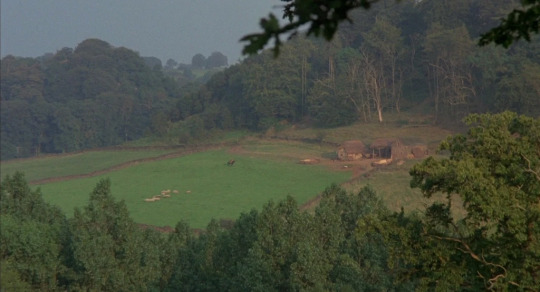
These elements, cinematography, lighting, costuming, special effects, etc., are the elements that can catch the attention of an audience, taking a ‘good’ film, and turning it into a ‘great’ film, thanks to the powers of movie magic.
See, movies are a very visual medium. You can have a good story and characters in a book, but you have to imagine what it looks like as it moves along. In a film, you have to watch what someone else made up. This can be either an advantage or a disadvantage, and the difference is made entirely thanks to production design. These ‘facets of film’, the trimmings that make a movie a movie, are vital to visual storytelling, enabling casual movie-goers to interpret what the framing of some scenes is trying to tell them.
Most audience members subconsciously internalize things like thematic costume changes, or a musical cue, without putting thought into figuring out what exactly was getting that point across. The point is, these ‘facets of film’ are not only for filmmakers or movie critics to think about and fawn over: This storytelling shorthand is an important tool that gives the audience all of the information they need to have, without spelling it all out in dialogue. Westley as the Dread Pirate Roberts wears all black as visual shorthand that he is dangerous, Humperdinck wears fine clothes to establish status and style, even Buttercup, whose clothing is plain when she is with Westley and uncomfortably bedecked when she is with Humperdinck, is dressed in a way that conveys something to the audience.
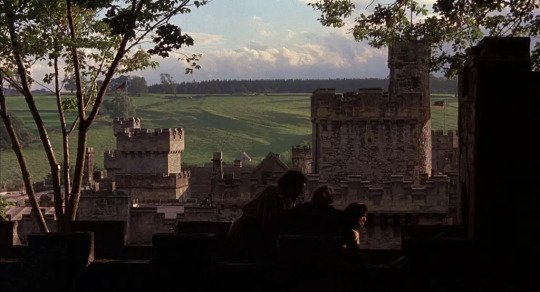
In other words, it’s very useful.
A good director knows to use these aspects of ‘storytelling shorthand’ well, as opposed to competently. Too often, directors can decide to focus the production crew, and the movie itself, in the wrong place, attempting to garner praise for production design rather than substance.
There’s nothing wrong with looking good and being a well-done movie from a technical standpoint, but the balance is necessary. A good director knows that visual storytelling accentuates its story, rather than overshadows it, intended to get the plot across in the most effective way possible, focusing on what is important: the story and characters.
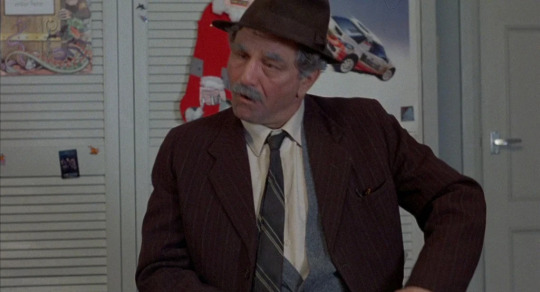
Much like The Princess Bride does.
The Princess Bride isn’t exactly a blockbuster-style film. There isn’t a huge budget spent on special effects or huge setpieces, but what is in there is done so with a remarkable touch. Every inch of this film is designed to look like it takes place in a fairy-tale story, not exactly ‘real locations’, but looking like pictures you’d find in a story book. That extends to the camerawork.
Camerawork is a pretty big deal in film for obvious reasons.

The way a director uses a camera can tell the audience a lot, using some shots to emphasize different emotions, or even to get across different feelings to the audience. Filmmakers use editing of these shots together to tell the story, to move the audience’s line of vision so that it is always centered on the action while also helping to set the mood or leave a visual impression on the audience.
So, does The Princess Bride manage that?
Most of the camerawork in The Princess Bride is fairly standard stuff, wide-shots for action, close-ups for dialogue or emotion, establishing shots for a new location, etc. However, there are a handful of tricks that are notable: natural lighting used in the shots to make them feel open, spacious, and real, contrasting with artificial levels of darkness in the Fire Swamp, or the upwards-facing shot of Fezzik’s impersonation of the Dread Pirate Roberts, seeming to increase his size and formidability. Other shots, like the coming-into-focus of Westley rising to point his sword at Humperdinck, are equally effective, in uses of ‘subjective camera’. There are other, more traditional examples: shots of Buttercup’s abduction from above to make her seem even smaller, and establishing ‘relationship’ shots of people on the same level in the same frame, such as the sunset-lit kiss sequences bookending the film. Even the editing, while being mostly standard, is given a few moments to shine, such as when the Grandfather is trying to find his place in the story after interrupting to make sure the Grandson isn’t frightened by the Shrieking Eels.
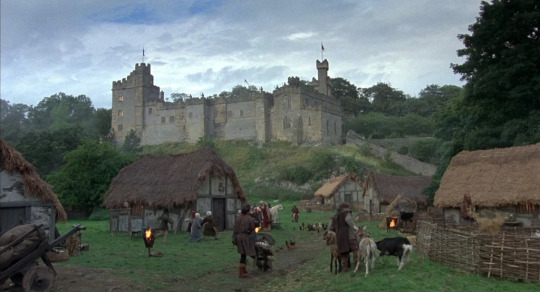
Still, overall, it’s a fairly simple film in terms of visual style. The cinematography is aimed at one goal: creating a charming, warm, comforting atmosphere that translates well and correctly conveys the mood of the audience.
This is even more so aided by the film’s score.
It’s fairly obvious that a movie’s soundtrack is integral to its success: a good movie can be elevated to iconic levels thanks to a good score (i.e. Jaws, Psycho, Star Wars, etc.). In other cases, music can be passable, serviceable, without being bad or fantastic.

In the case of The Princess Bride, the score is….interesting, to say the least. Instead of a traditional ‘fantasy’ score, the soundtrack was composed by Mark Knopfler, the front guitarist for the band Dire Straits (Money for Nothing, Walk of Life), using synthesizers and acoustic guitars to get the sound of the film. The score, especially both the instrumental and vocal covers of ‘Storybook Love’ (sung by Willy DeVille) is memorable, overall, if nothing to write home about. The soundtrack does what it is intended to do: set the scene, notably in the scene ‘The Chatty Duelists’, where Inigo and Westley fight to the stings of the music. The music overall accentuates the grand, sweeping visuals as well as the tense, exciting sequences, keeping the audience in the story very well.
Speaking of grand, sweeping visuals:
The sets of The Princess Bride overall aren’t really ‘sets’ at all. The ‘Cliffs of Insanity’ were in actuality the Cliffs of Moher in Ireland, and even Humperdinck’s castle was actually a real medieval manor house. From Miracle Max’s shack to the Fire Swamp, to Rugen’s torture chamber, the rest of the settings of The Princess Bride do their job very well, creating a fantastical atmosphere that serves the story admirably. These aren’t the vivid, magical sets of The Wizard of Oz, designed to create an atmosphere of dreamlike fantasy, rather, the settings of The Princess Bride are more intended to create a feeling of Magical Realism, that it is a storybook, but that the locations look and feel familiar and realistic. This is helped somewhat by the fact that the film itself doesn’t rely on special effects much at all: aside from the Shrieking Eels and the (rather unrealistic looking) ROUSes (saved by the storybook feel of the entire film), there aren’t any real fantasy-specific special effects that other films might utilize.

There’s more to an immersive movie experience than sets, costumes and music, though. In the end, no matter how impressive, the special effects, sets and costumes don’t really mean anything if the characters aren’t believable. The movie really rests on the shoulders of the performers: it’s on the actors to try to sell not only their surroundings and story, but the characters themselves, everything from the personality to the emotions.
In the case of The Princess Bride?
Cary Elwes’s performance as Westley is lighthearted, emotional, and extremely sincere. He’s charismatic, charming, and makes you believe that he’s exactly as skilled as the story needs him to be. He also manages to convince an entire audience of the genuine love he has for Buttercup, and is distinct as both his Westley persona and his ‘Dread Pirate Roberts’ persona. In other words, he’s perfect.
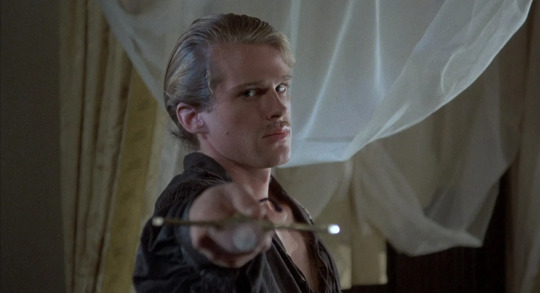
Cary Elwes balances the ‘indestructibility’ that most protagonists seem to possess, seemingly in control of dire situations, as well as the vulnerability necessary for an audience’s sympathy and concern for his well-being, for his goal. In other words, he manages to pull off a character that seems designed for an earlier time, updating it with a sense of humor and charm that perfectly suits the rest of the film.
Robin Wright is similarly well-suited for Buttercup, as she’s written. I’ve discussed elsewhere the potential problems presented by Buttercup’s rather uninteresting personality and role in the story, but Buttercup’s Defrosting Ice Queen tendencies are very well conveyed, especially early on. As I mentioned in other articles, her chemistry with Elwes makes the romance element of the film convincing in the few scenes they have together. She does a good job with the material given to her, it’s just a shame that there wasn’t more for her to do.
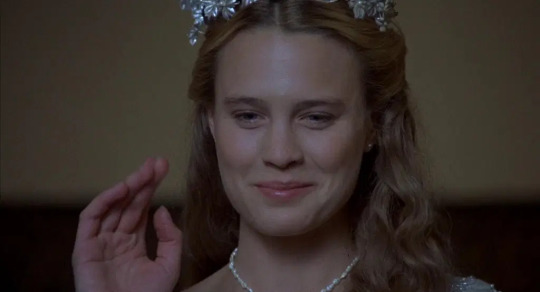
On the other hand, Mandy Patinkin as Inigo Montoya, despite the unconvincing accent, is inspired, with Patinkin bringing both warm humor and ice-cold vengeance and formidability to the role. Both he and Elwes brought great physicality to their sword-fight sequences, training hard in order to do as much of their own fighting as possible, and it shows in the performances in the final product. Inigo’s inner conflict is showcased well, with Patinkin providing both the comedic highlights as well as the intense emotional ones, especially his final duel with Rugen. It is Inigo’s lines which tend to be the most memorable, owing a lot to Patinkin’s iconic delivery.

All three of the main trio play their parts perfectly, but they are only the chief standouts in an entire film full of them.
André René Roussimoff (better known as André the Giant) despite not being an actor in the same vein as the rest of the cast, is iconic as Fezzik. The instant likeability present in the performance carries strongly throughout the film, with his own fair share of memorable dialogue (which, granted, nearly every member in the cast has). His physicality isn’t really what makes him such a distinct part of the cast, rather, it’s the character’s heart and humor that makes this performance such an integral part to the film at large.

Similarly (though in the opposite direction), Wallace Shawn is a wonderful choice for Vizzini, his distinct voice and mannerisms giving the character plenty of funny dialogue without entirely removing the threat he poses. Despite not having a lot of screen time, Shawn manages to make the role iconic instantly, with inflections that make the word ‘inconceivable’ memorable to this day.

Chris Sarandon is perfectly cast as Prince Humperdinck, playing arrogance and control that all come crashing down in the final scene. Humperdinck is all bark and no bite, appearing confident and competent until he is met by someone who might pose a challenge. He’s conniving, cold, and disinterested in anything other than his war, making it especially rewarding when he is defeated.

Similarly, Christopher Guest plays Count Rugen with a sophisticated coolness, never really invested in what’s going on or terribly worried about it until that ‘little Spanish brat’ comes for revenge, very well equipped to deliver it. He plays the final duel scene notably with an increased losing of composure, cluing the audience in to his inevitable demise for the sake of vengeance.

The other characters perfectly hit their mark as well: Billy Crystal and Carol Kane are a comedic team to be reckoned with as Miracle Max and Valerie, with other special standouts including Peter Cook as the Impressive Clergymen (a scene stealer with only one appearance), and Peter Falk and Fred Savage as the Grandfather and the Grandson, respectively.
Every character in The Princess Bride comes across exactly as they should: as characters in a fairytale, fondly looked back on from a place of adulthood. Each performance is perfectly suited to each character and the type of movie that they are in, with every performance hitting a mix of sincerity and drollness. These performances aren’t necessarily subtle, but they aren’t supposed to be. They are heroes and villains, giants and master swordsmen and princesses, acting out a fairy-tale that knows exactly what it is, with tonal consistency that never seeks to outdo the material the actors are given. These performances are the final piece to cementing this film as a true classic, bringing entertainment to people decades after it’s first release.

In short, the filmmakers of The Princess Bride knew what they were doing. Everything from the performances to the camerawork gets across every emotion and aspect of the story instantly, with the sets and costumes working to explain simply what’s going on as quickly as possible. It’s a storybook set to film, both comforting and exciting, and the ending feels right, no matter how many times we revisit it.
The Princess Bride has long been considered a cult classic, a hidden gem that was looked over by a public who never really knew it was there in the first place. Even if it never reaches the high peaks of fame as other fantasy classics, it may not be a stretch to hail it as one of the greatest fantasy films (or films in general) ever made, through simple (but not simplistic) substance, if not bombastic style.

Of course, no movie comes around accidently. There had to be some work done behind the scenes for this film to have come about.
Join me next time as we discuss the Facets of Filmmaking: the Behind the Scenes of The Princess Bride.
Thank you guys so much for reading! If you have something you’d like to add or say, don’t forget that the ask box is always open! I hope to see you all in the next article.
#The Princess Bride#The Princess Bride 1987#1987#80s#Adventure#Comedy#Fantasy#Family#Romance#PG#Cary Elwes#Robin Wright#Mandy Patinkin#Chris Sarandon#Christopher Guest#Wallace Shawn#André the Giant#Peter Falk#Fred Savage#Rob Reiner#Film#Movies
11 notes
·
View notes
Text
Irish Wish Review: A Fantasy Filled with Love and Laughter

Irish Wish, the latest offering from director Janeen Damian, beckons us into a realm where the fantastical meets the all-too-familiar whirlwind of romantic emotions. Starring Lindsay Lohan, who has seemingly found a cozy niche with Netflix following their prior collaboration, this fantasy romantic comedy unfolds against the lush backdrop of Ireland, promising a mix of magic, mirth, and misadventures. With a script penned by Kirsten Hansen, the film aims to strike a delicate balance between the whimsical and the profound, wrapped in the comforting blanket of love stories we have come to cherish.
https://www.youtube.com/watch?v=_gKXowSyfjM
Lohan, returning to the genre that has cherished her, embodies Madeline "Maddie" Kelly with a palpable sense of authenticity and vulnerability. When Maddie's heart gets shattered by the news of her lifelong love marrying her best friend, she opts for grace, diving into the bridesmaid role with a heavy heart in Ireland, the land of legends and leprechauns. The plot takes a mystical turn when Maddie, caught in a moment of desperation, voices a wish for true love, only to find herself in an alternate reality as the bride.
Ed Speleers as James Thomas and Alexander Vlahos as Paul Kennedy navigate their roles with commendable charm. Each actor presents a different love archetype that Maddie finds herself entangled with. The chemistry is palpable and occasionally sizzles, although at times it feels as though the narrative does not fully explore these dynamics to their fullest potential. Ayesha Curry, Elizabeth Tan, and the ever-elegant Jane Seymour add depth to the ensemble, bringing humor, wisdom, and a touch of sassiness that enriches the narrative fabric of Irish Wish.
The film's captivating Irish setting showcases sprawling landscapes and quaint villages. It's a character in its own right, offering a visual feast that elevates the film's fairy-tale quality. The locale also integrates seamlessly with the film’s thematic elements. It underscores the idea that love, much like the Irish countryside, is wild, unpredictable, and breathtakingly beautiful.
However, Irish Wish doesn't escape certain pitfalls common to the genre. The plot, for all its magical twists, occasionally treads into the realm of predictability. The contrived central conflict weakens the narrative's potential for greatness. The movie lightly explores themes of self-discovery and fate, leaving a desire for a deeper exploration.
The movie's heart and humor, however, are undeniable. Lohan shines in her role, captivating audiences with her warmth and wit. Her nuanced performance showcases her ability to anchor a film with charisma and talent. The supporting cast also delivers, providing a balanced mix of levity and gravitas that propels the story forward.
From a technical standpoint, Irish Wish benefits from Janeen Damian's direction. It maintains a brisk pace and a light touch, ensuring that the film's fantastical elements feel grounded in emotional truth. The soundtrack serves as an effective emotional and atmospheric complement to the on-screen action.
The film excels at depicting the complexity of love within a wish-fulfillment fantasy, without avoiding real emotions. It celebrates the idea that finding true love involves both magical and painful moments.
Irish Wish is a comforting, enjoyable addition to the romantic comedy genre. It offers escapism without straying too far from emotional authenticity. Its charm lies in its familiar tropes, heartfelt performances, and the scenic beauty of Ireland. The film is a reminder that sometimes, a little dose of magic and laughter is just what we need. Lindsay Lohan and the cast bring to life a tale as inviting as an Irish pub on a cold day. It might not offer any surprises, but its warmth and cheer are more than enough to warrant a visit.
Read the full article
0 notes
Photo

Beast from Haunted Cave
I’ve actually received a couple of requests for movies to review, and I am looking into them. I just have a few others I want to get through first… like this one.
Beast from Haunted Cave begins with a familiar tune – over the credits we hear the same jumpy ‘suspense’ music that opened both Night of the Blood Beast and Attack of the Giant Leeches. It seems to have been a favourite of Gene Corman (Roger’s brother), who produced all three movies. The writer, furthermore, was Charles B. Griffith, who did the same job for half a dozen MST3K movies, including It Conquered the World, Gunslinger, and Wizards of the Lost Kingdom II. Finally, Beast from Haunted Cave has the strange distinction of being the only movie I’ve ever seen that thanks ‘the people of South Dakota’.
A master criminal and his drunk, stupid henchmen (one of whom is a drunk, stupid henchwoman) have decided to rob a mining operation. In the process they annoy some kind of giant bug monster that was living in the mine, and it stalks them and their guide through the wintery mountains until they reach a cabin where they hole up to wait out a blizzard. Between the monster lurking outside and the fact that the gang are all getting fed up being stuck indoors and starting to hate each other (a familiar scenario in 2020), it’s a good bet that no more than two of them are getting out alive. Probably the henchwoman and the guide, since they were kissing earlier.
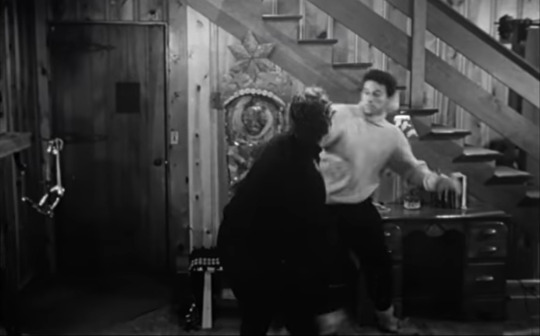
Beast from Haunted Cave is a typically cheap Corman production. The familiar music persists through the entire film, and gives the same impression it did in Blood Beast – the soundtrack people were given a set of pre-existing pieces and did what they could with them. A terrible winter storm is represented by howling wind noises, but it never actually snows. The monster is dreadful. The webs draped over everything demonstrate that it’s a spider, but all we actually see is a featureless head and a couple of flailing arms that resemble nothing so much as one of those inflatable tube men at a used car lot. When all we’re seeing is one leg reaching out to grab people it’s not awful, but as soon as we get a good look at the whole creature it’s clear that this is some kind of repurposed Hallowe’en decoration. The gold bricks the thieves came to steal are just… well, bricks painted gold. The paint isn’t even shiny.
Outside of that, however, the movie isn’t really that bad. Everybody on the crew seems to have known what they were doing, and did their best to work within their meagre budget. The photography is surprisingly competent. The lighting rarely qualifies as atmospheric but there’s always enough of it – even in scenes set at night or in a dark cave, I never found myself squinting and wondering what’s going on. The snowy landscapes are shot on location and look suitably hostile (although they could often only do one take, since after that the snow wouldn’t look pristine anymore). You can see the actors’ breath, which gives a visceral sense of the cold. The writing is mostly just serviceable but every so often there’s a little gem tucked within it.
The two places where this shows best are in the character of Marty and in the relationship between the mastermind, Alex, and the henchwoman, Gypsy. Marty is a drunken buffoon but there’s more to him than that. Early in the film he invites a cocktail waitress from the ski lodge, Natalie, to make out in a cave with him. They disturb the monster, and Marty escapes but leaves Natalie behind. For the rest of the film, even as he continues to be a drunken buffoon, it’s clearly eating him up that he abandoned this woman. There’s an ambiguous moment when he finds Natalie’s still-living body webbed to a tree in the middle of the woods – perhaps it really happened, or maybe he’s having a nightmare.

Gypsy has clearly been working for Alex for some time, as secretary, girlfriend, and as a way of distracting the targets of his robberies. She’s an alcoholic sad sack who looks ten years older than her stated age of twenty-six, and clearly regrets her self-destructive life. She cannot leave, however, because Alex is controlling and violent, and because she wouldn’t know what she wants or who she is without him. When he beats her up for kissing Gil the guide, she later says Alex had a perfect right to slap me. At the same time, the film hints of happier times between the two in a running gag, never explained, where Alex and Gypsy call each other ‘Charles’. This seems to have once been an endearment, but is now a passive-aggressive insult.
One character whom I wish had done more is Gil’s housekeeper, Small Dove. She rarely speaks, but she carries an axe and spends a lot of time judgmentally watching the stupid white people. She could have been this movie’s Eulabelle, but she ends up getting eaten by the monster without ever doing anything badass. Shame.
Let us now return to a familiar question: who is the main character in this movie?
I guess Gil is the ‘hero’. He’s the hunky male lead, who gets the girl at the end. He never does much to further the plot, though, except for urging Gypsy to leave Alex and figure out how to lead her own life. Although she seems romantically interested in him, Gil may not return the sentiment – it’s hard to say. He doesn’t kill the monster, Marty actually does that by setting it on fire with a flare gun. Gil is just sort of there, a cardboard cut-out in the ‘handsome guy’ box all movies must have.
Gypsy has a much better claim on the protagonist role. The script takes much more interest in her situation than in anybody else’s, and we are encouraged to sympathize with her feeling lost and trapped. She survives at the end to run off with Gil, though we’re not given any indication of what they’ll do now or whether the budding relationship between them will last. Like so many other movies of its era, Beast from Haunted Cave has no denouement. We simply fade to black from the monster on fire (another thing they could only do once, since they actually burned the prop).
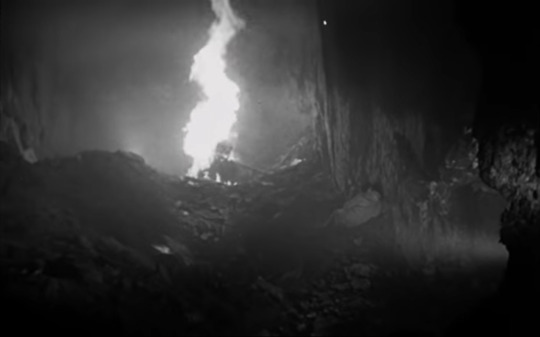
Gil is the one who describes the cave as ‘haunted’, but this never has anything to do with the story. There is not even a hint of a ghost or even a ghost story connected with the cave. I assume the word is in the title mostly because Beast from Cave sounds like a dinosaurs-and-cavemen movie made by the cavemen, and having put it there, Griffith felt he had to justify it with a line of dialogue.
The character who had the most potential to go through an arc is actually the antagonist, Alex. He’s been pulling heists like this for years, and is proud of his success. He has no reason to think this job will be any different, and yet as the movie progresses, Alex has to watch his plans fall apart all around him. One of his henchmen is going mad from terror and guilt. The other, Byron (who you can tell apart from Marty because Byron is The One In The Stupid Hat), is developing a crush on Small Dove and thinking about getting out of crime and settling down. Gypsy is kissing Gil right in front of him, and Alex worries what she might have told him about the real purpose of the ski trip. Then there’s the storm, which means the plane that was supposed to take them to Canada can’t get to them, and the lurking monster. At the end of the film, Alex is still trying to regain control of the situation, even as the monster closes in on him.
Criminals on the run getting menaced by a monster seems to be a surprisingly common plot for a movie. Voodoo Woman and Killer Fish were both variants on the theme. I’m guessing this serves two purposes within the plot: the first is that it means we’re not too sad when the main characters die, since they were already bad people. The second is what I think Beast from Haunted Cave was going for – it means that the characters cannot ask for help with their situation. The group know, from hearing it on the radio, that they’re being hunted by the authorities. If they were to call for help, whoever came to the rescue would find the gold bars in their bags, and they’d go straight to prison.

This idea is mostly implied. Nobody ever actually suggests calling for help, or even trying to contact the people who were gonna be flying their getaway plane. It also seems that they had no contingency plan for bad weather, which makes the whole operation look very poorly-planned.
One thing I did find myself thinking about is that the radio news mentions the police looking into the theft, but we never actually see the cops investigating. This applies to the other movies I mentioned above, as well… in Voodoo Woman we’re in an area that doesn’t seem to have much by way of police, but in Killer Fish, too, law enforcement is entirely absent. This is a good choice on the part of the writers and directors, because it allows us to focus on the monster plot. If they were to include detectives, that would unnecessarily complicate things and require a resolution of its own.
Then again, if they had two resolutions, they might have had to include some ‘wind-down’ time. I don’t like it when movies end abruptly after the monster dies, because it tends to leave dangling subplots. Gil and Gypsy are still in the middle of nowhere, and must now shelter in the cave until the storm ends. Are they going to be okay? Last time we saw Small Dove she was weakened from blood loss but not yet quite dead. Can they save her? Will Gil and Gypsy stay together, or will he encourage her to go find herself? So there’s another lesson for aspiring film-makers: don’t end your movie until the story’s actually over.
20 notes
·
View notes